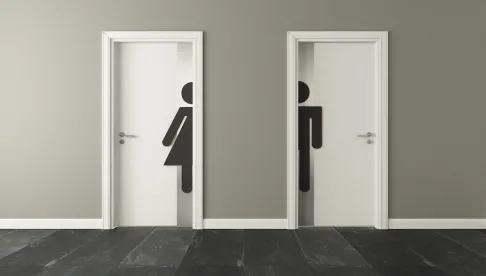Women often pay more than men for similar goods and services. A shampoo for men may be nearly identical in chemical makeup to a shampoo for women, but the woman will pay more. This phenomenon is referred to as the “pink tax” – products marketed to women cost more than their counterparts marketed to men. Recent data analyzing toys, clothing, personal care products and home health products shows that: (1) products targeted at women are higher-priced than those targeted at men 42% of the time; and (2) of those items more expensive for women, the prices are an average of 7% higher.[1] The pink tax thus places a direct cost on individuals who purchase products marketed to women.
Some states are starting to enact laws aimed at curbing the pink tax. On September 30, 2020, a New York ban on the pink tax took effect under a newly passed gendered pricing law, Section 391-U.[2] The law prohibits sellers from charging different prices for any two goods or services that are “substantially similar” but are marketed to or intended for different genders.[3] It applies to goods and services for personal, family, or household purposes.[4]
Where there is discriminatory pricing under the law, the NY attorney general may seek an injunction to enjoin and restrain the upcharges.[5] The injunction can be issued without proof of injury in fact.[6] The court may also tag on a civil penalty not to exceed two hundred fifty dollars for a first violation and five hundred dollars for a subsequent violation.[7]
Although the law is aimed at eliminating the pink tax, there are many loopholes and exclusions.
First, only the attorney general is granted a right of action – there is no private right of action.[8] Individual consumers may, however, demand a complete written price list from service providers.[9]
Second, the law is limited to goods that are substantially similar.[10] Substantially similar goods are only those that have no substantial differences in (1) the materials used in production, (2) the intended use, (3) the functional design and features and (4) the brand.[11] This leaves open the possibility that one company, operating under two brands, can sell products to women at a higher price without violating the law. For example, if a parent company operates under two gendered hair dye brands, could the brands sell similarly crafted dye for women at a higher price than for men, or would that constitute a violation by the company under Section 391-U?
Likewise, substantially similar services include only those that exhibit no substantial difference in (1) the amount of time needed to provide a service; (2) the difficulty in providing a service; and (3) the cost of providing a service.[12] This creates further loopholes. For example, a publisher of two magazines, one targeted at men, and the other targeted at women, could argue that providing subscription services and the content that accompanies those services is always more expensive for women readers. Rebutting this argument could require extensive testimony from experts in the publishing field.
Third, even where substantially similar goods and services are at issue, the law permits price disparities in many situations. The law specifically carves out an exemption for price disparities based on: “(a) the amount of time it took to manufacture such goods or provide such services; (b) the difficulty in manufacturing such goods or offering such services; (c) the cost incurred in manufacturing such goods or offering such services; (d) the labor used in manufacturing such goods or providing such services; (e) the materials used in manufacturing such goods or providing such services; or (f) any other gender-neutral reason for having increased the cost of such goods or services.”[13]
The personal care industry may rely on this broad list of exemptions to continue charging higher prices for products advertised to women. Notably, the price disparity for gendered products in the personal care industry is higher than elsewhere – on average, up to 13% more for women.[14] One of the largest price discrepancies is in hair care – products cost women nearly 48% more, with an average difference of $2.71 per set of shampoo and conditioner.[15]
NY has paired this new law with a social media campaign centered around the hashtag #PinkTax to raise awareness, which at the time of this blog’s publish, has 10.8K posts.[16] With the buzzing publicity surrounding this legislation, the retail industry should be prepared for other states to pass similar laws.
FOOTNOTES
[1]https://www.governor.ny.gov/news/governor-cuomo-unveils-10th-proposal-2020-state-state-eliminating-pink-tax, referencing https://www1.nyc.gov/assets/dca/downloads/pdf/partners/Study-of-Gender-Pricing-in-NYC.pdf
[2] 26 N.Y. GBS § 391-U.
[3] 26 N.Y. GBS § 391-U(2)-(3).
[4] Id., at (1)(b)-(c).
[5] Id., at (6).
[6] Id.
[7] Id.
[8] See id.
[9] Id., at (5).
[10] Id., at (1)(d)(i).
[11] Id.
[12] Id., at (1)(d)(ii).
[13] Id., at (4)(a)-(f).
[14] https://www1.nyc.gov/assets/dca/downloads/pdf/partners/Study-of-Gender-Pricing-in-NYC.pdf
[15] Id.
[16] https://www.governor.ny.gov/news/governor-cuomo-launches-campaign-eliminate-pink-tax




 />i
/>i
